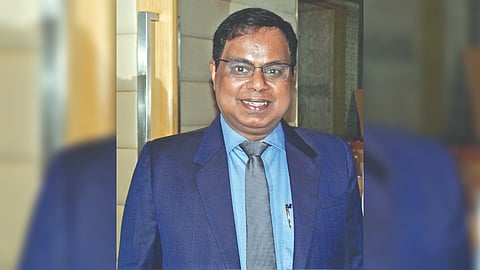

CHENNAI: A mandate for 40 per cent of rural income to flow through co-operatives has turned the spotlight on this movement, that predates independence. A tech stack will act as the backbone and spur the computerisation of the eight lakh co-operatives in the country, a top Nabard official said on Wednesday.
Recently, the Centre had approved the setting up of two lakh Primary Agriculture Credit Societies (PACS) and dairy-fishery cooperatives in uncovered villages and panchayats over the next five years. At present, there are around 63,000 functional PACS in the country. The Cabinet had cleared steps to strengthen the cooperative movement in the country and deepen its reach up to the grassroots.
Speaking to the media on the sidelines of the ‘South India conference on financial inclusion,’ here, KV Shaji, chairman, Nabard, said it is high time the members of the co-operatives came together so that the objective of re-looking to revive them is achieved. “Individually people are doing things and co-operatives are not that active. They are just focusing on lending,” he said, seeking to highlight the need for such entities to transform from a consumption to an enterprise approach.
To make this paradigm shift, the co-operatives have to become micro enterprises, which would be activity based like marketing and dairy farming. “As the economy grows, the percentage of co-operatives also must grow so that whatever additional profits that are accruing will also be ploughed back,” he said, adding that otherwise, the entry of private enterprises would lead to erosion of profits and impacting the welfare of the region too.
In this context, the data capture of the abysmally low rural income (in single digit) gains precedence and therefore the Central government, along with the states, is working on building a tech stack that would aid the hand-holding process. “The co-operatives would have to manage for few years and till then, the hand-holding will be done by the government through Nabard,” Shaji said, adding that it is tying up with multiple partners and vendors including Intellect Design of Chennai so that all the aspects of the functional framework (ERP, audit, payment software, cyber security) can be operationalised.
Typically, through audits, the entities are assessed but “their actual cash flow needs to be available on a near real-time basis. We can then be sure of taking more credit risk exposure,” he sought to point out, adding that such a visibility was possible only using technology. The pilots in this direction will begin within two to three months as Nabard is still evaluating the right partner.
The Nabard chief also threw light on the charge flow and dynamic creation of charge so that the credit availed is used for the purpose it has been taken, thereby preventing diversion. For this, it is looking at multilateral partners, so that the balance sheet is not merely a financial one but an impact record.
Earlier, Uma Sankar, CGM, RBI, spoke about the 38 per cent share of credit garnered by non-banking financial corporations (NBFCs) and micro finance institutions (MFIs) while the rest held by banks, small finance banks and others. The removal of interest ceiling by the Reserve Bank of India, in lending, has enabled competition to play out, thereby creating a level-playing field in the credit ecosystem. While MFIs are significantly different from other financial institutions, the structure and product portfolio opens up an opportunity to put in place a co-lending model.
Calling for collaboration between the commercial banks and the MFIs with respect to cost of funds being cheaper in the former’s case, she suggested that a revenue sharing arrangement would make the credit dispensation robust leading to holistic lending.
Jiji Mammen, ED-CEO, Sa-Dhan, in his initial address, said south has led the rest of the country in financial inclusion, which can be seen as the cause for the success of microfinance. Therefore, valuable lessons for real financial inclusion can be learnt and replicated.
Visit news.dtnext.in to explore our interactive epaper!
Download the DT Next app for more exciting features!
Click here for iOS
Click here for Android